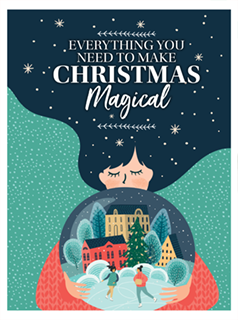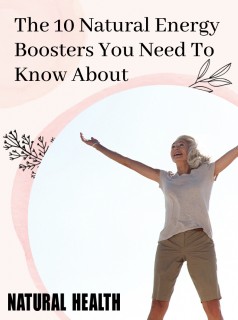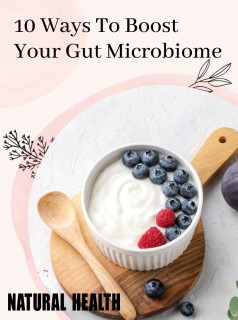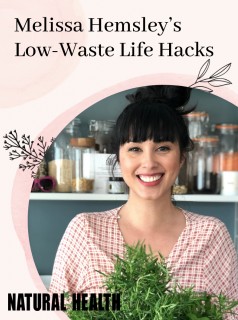Do you feel like a lump of lead for most of the afternoon? Don’t worry – you’re not alone. Here, wellbeing expert Gill Hasson gives her tips on making it through the day with energy and enthusiasm
Do you feel like a lump of lead for most of the afternoon? Don’t worry – you’re not alone. Here, wellbeing expert Gill Hasson gives her tips on making it through the day with energy and enthusiasm
So why does the mid-afternoon energy slump wash over so many of us? It’s all down to our circadian rhythms. Like animals and plants, humans have evolved to co-ordinate their activities with the day-night cycle that is caused by the earth’s rotation.
Circadian rhythms are physical, mental and behavioral changes that follow a roughly 24-hour cycle. They affect hormone release, body temperature and other important bodily functions.
Although circadian rhythms are produced by natural factors within the body, they are also affected by signals from the environment. Light and darkness are the main cues influencing these body rhythms, turning on or turning off genes that control your body’s internal clocks.
Meanwhile, other factors such as what and how much you’ve eaten for lunch, your levels of hydration and the amount of sleep you’ve had can all affect the ability to keep your eyes open mid-afternoon.
And it probably comes as no surprise that when we study our circadian rhythms over a 24 hour period, our mood, alertness and energy levels tend to be at their lowest between 2 and 4pm.
The good news is that there are several things you can do to manage the slump and get through the rest of the day. So, to avoid staring down the barrel of a long, slow afternoon with nothing left to give just follow these tips:
1. PLAN YOUR DAY
Do you know which part of the day you are at your best? Many people have never given it a thought. Some of us feel more alert first thing in the morning, while others don’t really get going until late in the day. Identify your optimum time of day and exploit it to accommodate your internal body clock.
Anne is a freelance copy writer. She’s at her best in the morning; anytime before lunch is when she’s most able to focus and concentrate on her work.
“I work from home and once the children have left for school I’m at my computer, still in my pyjamas. I’m so keen not to waste valuable concentration time, I often don’t get dressed till midday!
In the afternoons, I do things that don’t require as much focus and concentration; research on the internet, phone calls, posting letters, nipping to the local shops, clearing up and household chores – all jobs that don’t require great amounts of concentration or clear thinking. And, all that activity in the afternoon helps to keep me alert.”
2. GET MOVING
When you feel your energy levels dropping but you need to stay awake, get moving. If you can take time out in the afternoon, use it to go to the gym or for a run or brisk walk. If you’re at home, save vacuuming, changing the beds, sweeping the path, and gardening for example for the afternoon.
If you work in an office, walk up and down the stairs a few times. It’s up to you to work out what best fits into your day and your routine. You might feel that you’re too tired to even get up out of the chair, but get moving and you’ll soon get your blood pumping and feel so much better.
3. PLAY SOME UPBEAT MUSIC
Bright, cheerful music can not only lift your mood and improve your concentration, attention and productivity but it will leave you with your endorphins raised and your mind focused on the remaining hours in the day. And, if you dance along to the music, you’ve found another way to get your blood pumping and getting more energy-giving oxygen into your system.
4. BREATHE
If you can’t get up and move about, as soon as you feel the slump coming, for a quick energy boost, take a few minutes to do some steady, focused breathing. Again, this will increase the amount of oxygen in your blood. Why is that so important?
When your breathing becomes shallow, you limit your intake of oxygen. The result? That general lack of energy that’s so typical of the afternoon slump.
Increasing the amount of oxygen in your blood will help you feel less fatigued, and more able to focus and concentrate.
5. LET THE SUNSHINE IN
Find a sunny spot inside or head outside and sit in the daylight for 10 minutes. Whenever possible, have your lunch outside and divide your break between eating and a walk. It will help reset your internal clock and keep down the amount of melatonin (the sleep hormone) your body produces during this circadian dip.
6. EAT LITTLE AND OFTEN
For a start, don’t skip breakfast – you’ll be more likely to eat a large lunch or snack on sweets which will make you more tired in the afternoon. Be aware that what you eat for breakfast has an impact on how you feel for the rest of the day, so try to avoid sugary cereals and refined carbs like white bread, which will send your blood sugar levels shooting skywards, only to come crashing back to earth shortly after. Opt for poached eggs on wholemeal toast or porridge with berries for a burst of slow-release carbs and protein, keeping you feeling full up, meaning you’re less likely to crave unhealthy snacks – the enemy of productivity.
For lunch, choose energy-giving protein rather than energy-sapping carbs. Cutting down on the carbs at lunchtime can really make a difference to how you feel in the afternoon. A tuna salad, for example, is a better choice than a tuna sandwich. A green salad sprinkled with cheese, and a sliced hardboiled egg trumps a pasta salad. Pea and ham soup is less energy-sapping than a pizza and chips. Stick to a low-carb, highprotein lunch and you’ll feel much more awake when the afternoon comes around.
Enjoy teatime. Get into the routine of a mid-afternoon cup. It’s a good step towards beating the afternoon doldrums thanks to that little bit of a caffeine burst and the few quiet minutes it entails.
Be careful though, of relying on coffee for an energy kick. Caffeine is a stimulant but if you resort to a double cappuccino and bar of chocolate to give your power levels a much needed afternoon energy boost, it may well help, but only for the next half hour or so!
Before you know it, you’re right back to square one and wondering how you’re going to survive the rest of the day. Try to limit your caffeine intake to one or two cups in the morning and switch to tea or fruit tea in the afternoon.
Certainly, treat yourself to a biscuit, but be aware that again, a whole chocolate bar or slice of cake might give you a temporary boost, but once that jolt of sugar is gone, you’ll sink fast. Like coffee, sugar can give you an instant, but mercilessly short, hit of energy. Sweet, sugary snacks increase your blood sugar levels, which in turn leads to an insulin spike. Insulin triggers the production of a chemical called tryptophan, which is what your body converts into serotonin, a hormone which makes you feel sleepy.
Instead, opt for a snack that combines protein, fibre and complex carbohydrates (such as whole-grain crackers and a piece of cheese or a handful of fruit and nuts) to raise your blood sugar levels steadily and maintain them at that level.
Finally, chew some gum. Chewing gum with strong minty flavours is stimulating, and the mere act of chewing is something of a tonic to a brain succumbing to lethargy.
WHENEVER POSSIBLE, HAVE YOUR LUNCH OUTSIDE AND DIVIDE YOUR BREAK BETWEEN EATING AND A WALK
7. DRINK
Did you know that dehydration is one of the top causes of fatigue? It causes the blood to thicken, forcing the heart to work harder to pump blood around your body and wearing you out in the process. Drink plenty of plain water to keep your hydration levels topped up.
8. TAKE A NAP
Seriously! While small children typically take naps in the afternoon, our culture generally frowns upon a mid-day sleep. Of course, if you’re at home, taking a nap is easier to do than if you work in an office. There’s no point in trying to struggle on when all you want to do is go to sleep. Take your eyes off your screen and, if you can, close your eyes for a few minutes and focus on your breathing – you’ll be amazed at how much better you feel.
Rejuvenate your life!
Want to stay firing on all cylinders 24-7? Incorporate some of these vitality-boosting techniques from top ayurvedic expe rt Sebastian Pole into your life to feel fit as a fiddle!
Your daily living pattern should include:
Body care should include skin cleansing and self-massage
Exercise such as yoga, walking, gardening or sport
Relaxation such as breathing exercises and meditation practices
Creative outlets such as music, singing, dancing, writing poetry or fiction
Emotional balancing such as writing a journal, counselling
Daily nutrition
The foundations of a healthy immune system are based on a wholefood diet. An important factor in sustaining immunity is the avoidance of poorquality foods that have been refined, heavily processed, denatured, or are stale or rancid. Follow a primarily vegetarian diet that is constitutionally appropriate and aim for eight to ten portions of fruit and vegetables each day. All food should be organic. The foods listed below constitute an immune-boosting diet packed with vitamins A, B, C, E, germanium, iodine, selenium, manganese, zinc, sulphur and chlorophyll, and also cell-protecting flavonoids, betacarotenes, antioxidants, omega-3/GLA oils and prebiotic inulin.
Grains
Millet and roasted buckwheat are alkaline and, along with soaked brown and basmati rice, barley, oats, quinoa and amaranth, can mitigate the acidity associated with ageing.
Beans and pulses
Mung, aduki, chickpeas and fermented soy products, such as tempeh, are sources of easily digestible protein.
Vegetables
Carrots, squash and pumpkin are high in antioxidants and betacarotene; Jerusalem artichokes and chicory root are good sources of inulin; cooked alliums contain sulphur and inulin; the Brassica family are chlorophyllrich anti-cancer agents, as well as being rejuvenating and detoxifying; also good are seaweeds, spinach, beetroot, celery, asparagus, globe artichokes, mushrooms (shiitake, oyster, maitake).
Fruits
Eat berries with skins, pomegranates, and citrus peels.
Dairy
Only take dairy from grass-fed, organically reared animals; include some ghee in your diet.
Supplements to try:
Superfood ‘green’ formula Turmeric, aloe vera juice and natural vitamin C
Fresh grated ginger with lemon juice
Tulsi for the mind; chamomile for the nervous system; brahmi for consciousness reishi, ashwagandha and ginseng
Garlic, turmeric, green tea and andrographis to increase the natural immune response
Wholefood multivitamin and mineral supplement
Sebastian Pole is an ayurvedic and Chinese herbalist. He runs Pukka Herbs specialising in organic ayurvedic herbs and teas. For more information on ayurveda go to pukkaherbs.com
Article by
Gill Hassen
Well-being Expert
Article by
Gill Hassen
Well-being Expert























